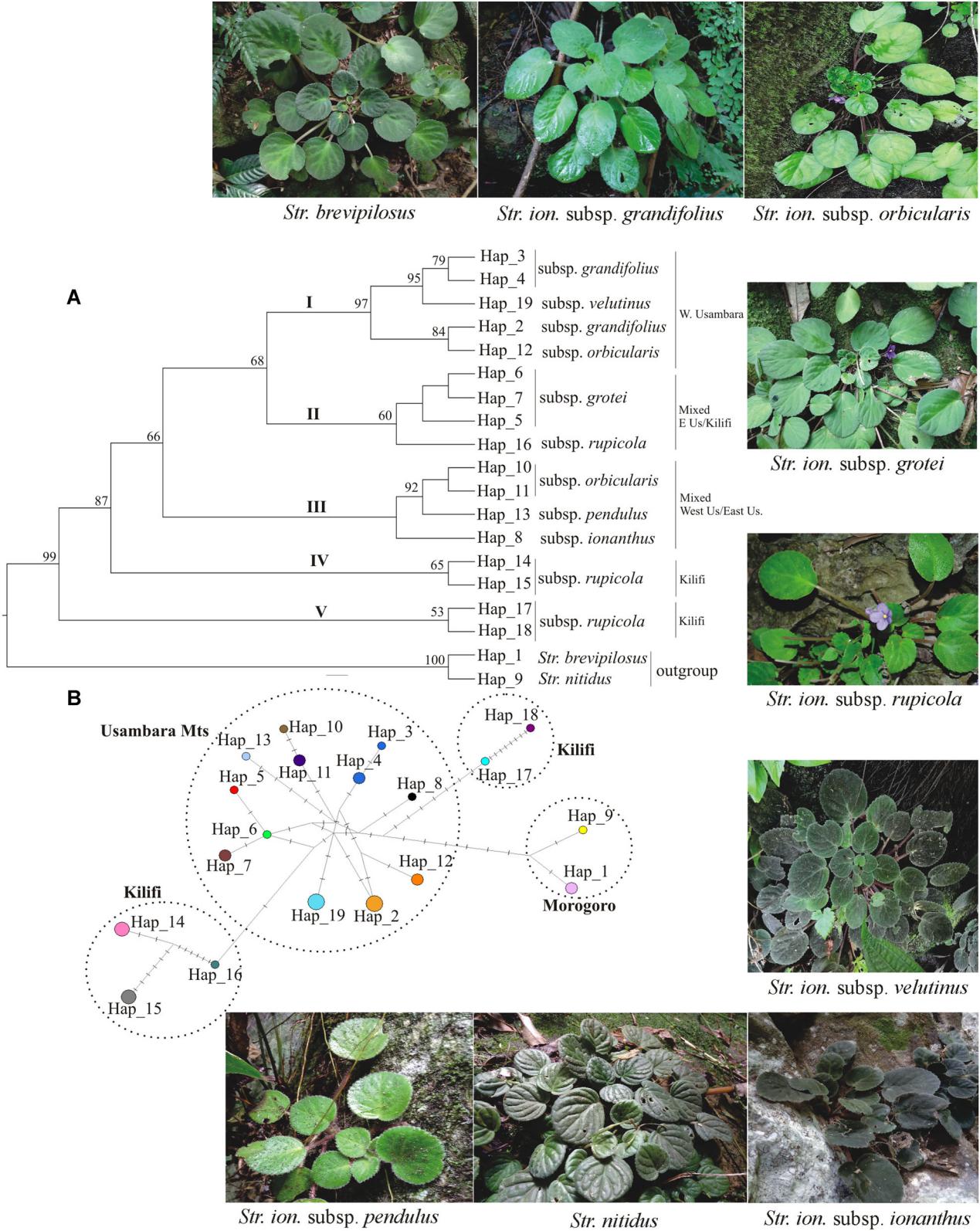Name:HU Guangwan
Tell:
Email:guangwanhu@wbgcas.cn
Organization:Wuhan Botanical Garden
Researchers Reveal the Multiple Pleistocene Refugia and Recent Diversification of Streptocarpus ionanthus (Gesneriaceae) Complex
2020-12-23
Streptocarpus ionanthus (Gesneriaceae) is endemic to Tanzania and Kenya, distributed in Tanga, Morogoro, and Kilifi regions. The species comprise nine closely related subspecies characterized by complex morphotypes and poorly understood evolutionary relationships, in which, controversial and inconsistent taxonomic placements have been previously witnessed due to unclear taxa boundaries and morphological overlap. The unresolved taxon delimitation in Str. ionanthus complicates their evolutionary implication, thereby hindering design of proper conservation approaches. Therefore, Str. ionanthus is an ideal model for investigating species evolutionary dynamics over time.
These nine subspecies, one of them is in coastal Kenya and eight in Tanzania. In Tanzania, the Usambara mountains form the distribution hotspot of this complex by having all eight subspecies.
Researchers from the Key Laboratory of Plant Germplasm Enhancement and Specialty Agriculture at Wuhan Botanical Garden, examined the population genetics and phylogeography of Str. ionanthus using both nuclear and chloroplast microsatellites. They further estimated the divergence time of the cpDNA haplotypes and modelled the historical, present and future distribution patterns of Str. ionanthus.
This study sampled 21 populations for seven subspecies (subsp. occidentalis and mafiensis could not be located in the field) representing the entire distribution range of Str. ionanthus. Previously linked species: Str. nitidus (B.L.Burtt) Mich. Moller & Haston (Mkingu Nature Forest Reserve, Nguru Mountains) and Str. brevipilosus (B.L.Burtt) (Nguru Mountains, Kanga Mountain) were represented by two populations in this study.
The results revealed that the distribution of Str. ionanthus featured three major regions: Kilifi, Tanga, and Morogoro. The isolation of populations from Kilifi and Morogoro was evident, unlike the Usambara mountains where weak genetic structuring was witnessed, thus presenting the Usambara mountains as the center of diversity for Str. ionanthus.
Results also revealed a pattern of contemporary evolutionary interaction in the Usambara populations as evidenced by the recent diversification of chloroplast haplotypes, high mutation rates, and the admixture of genetic clusters.
This diversification can be attributed to the repeated climate shifts in the Pleistocene that lead to multiple refugia at both high and low altitudes during the glacial and interglacial cycles. Furthermore, the taxa could be undergoing hybridization due to population contact zones during interglacial expansion. The poor phylogeographic structure brings into doubt the recognition of nine subspecies, thus suggesting a complex evolutionary history of Str. ionanthus.
This work was supported by grants from the Backbone Talents Project of Wuhan Botanical Garden, CAS and from the Sino-Africa Joint Research Center, CAS.
Relevant research results have been published in Journal of Systematics and Evolution entitled “Multiple Pleistocene refugia and recent diversification forStreptocarpus ionanthus (Gesneriaceae) complex: Insights from multiple molecular sources”.

Sampling points and distribution of Str. ionanthus cpDNA haplotypes. The different colored shapes represent different haplotypes (Image by WBG)

A, Str. ionanthus cpDNA haplotype phylogeny with only bootstrap probabilities above 50 shown. B, Network of the 19 haplotypes detected among different taxa. The size of the circles is proportional to the haplotype frequency. The lines connect different haplotypes, while the short crosses indicate mutation positions (Image by WBG)